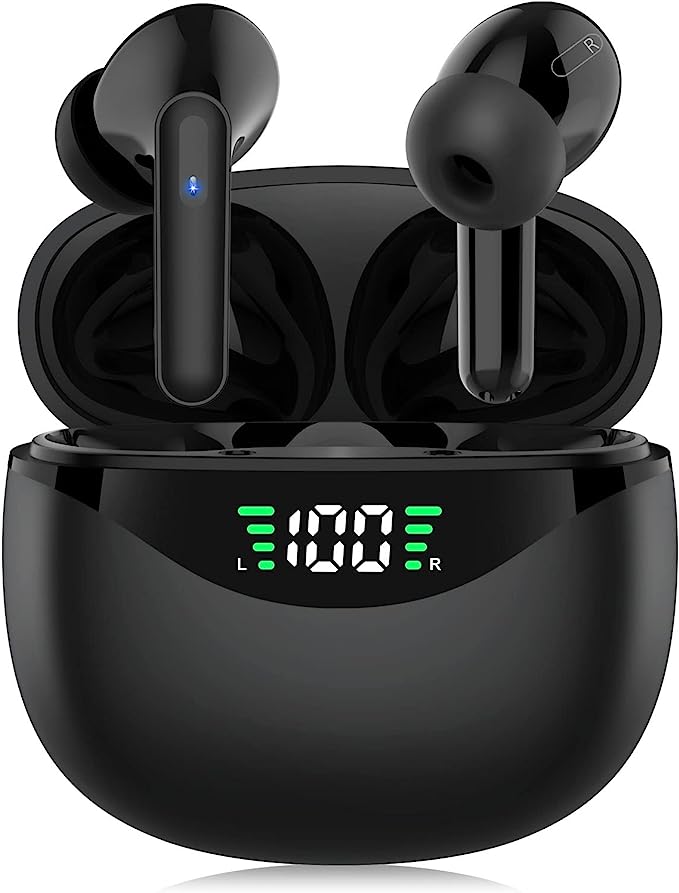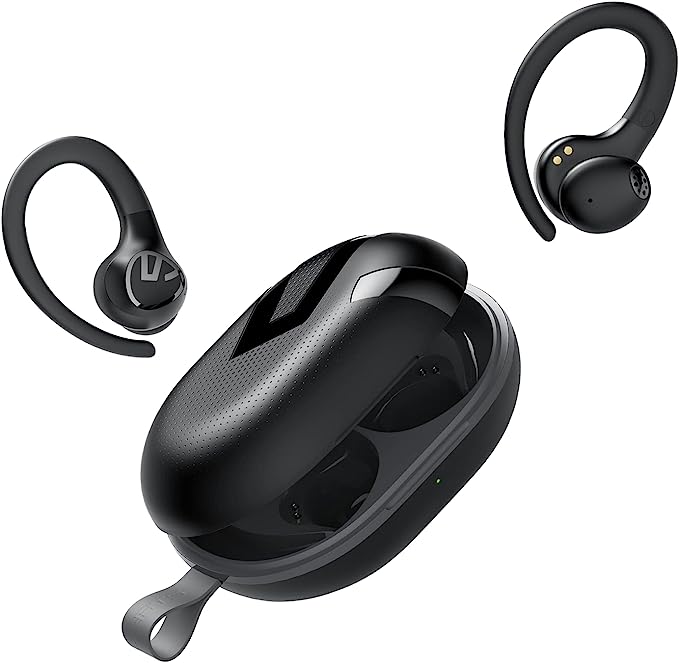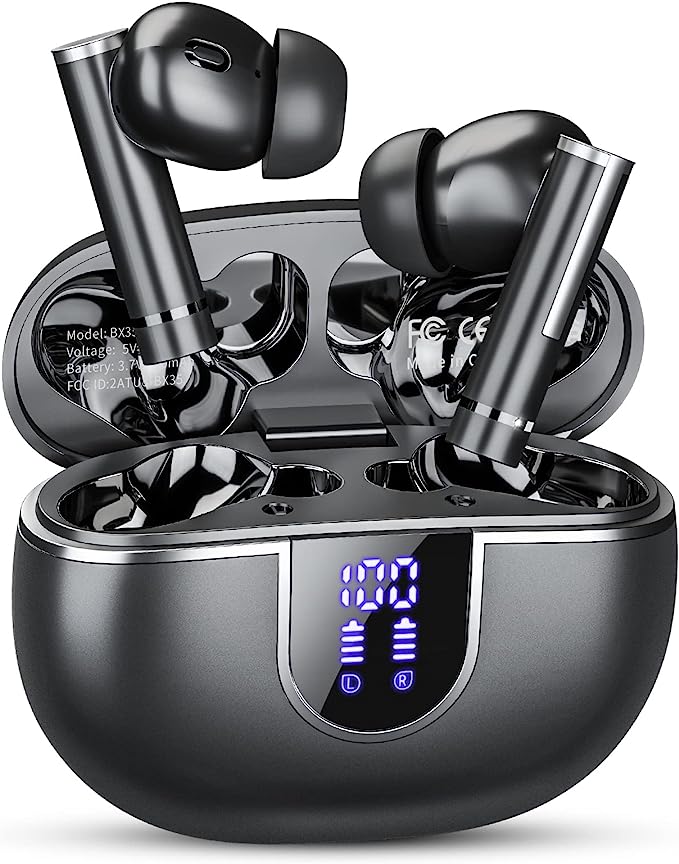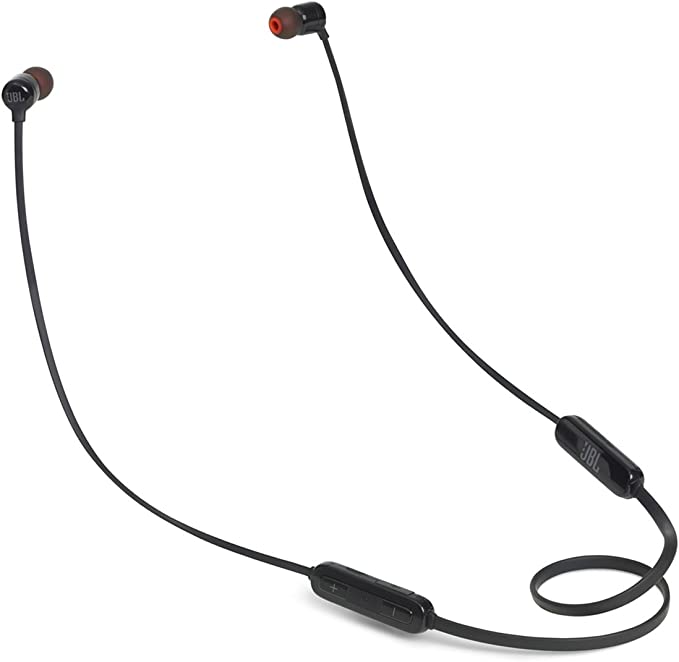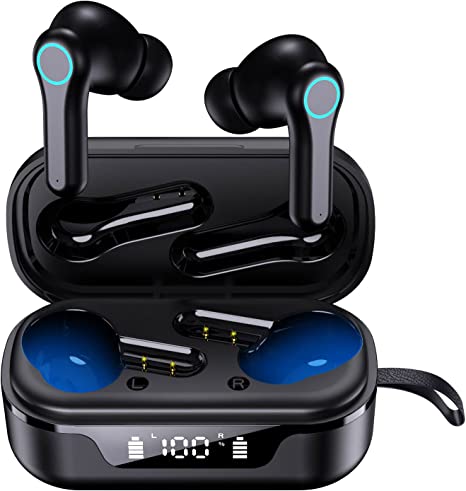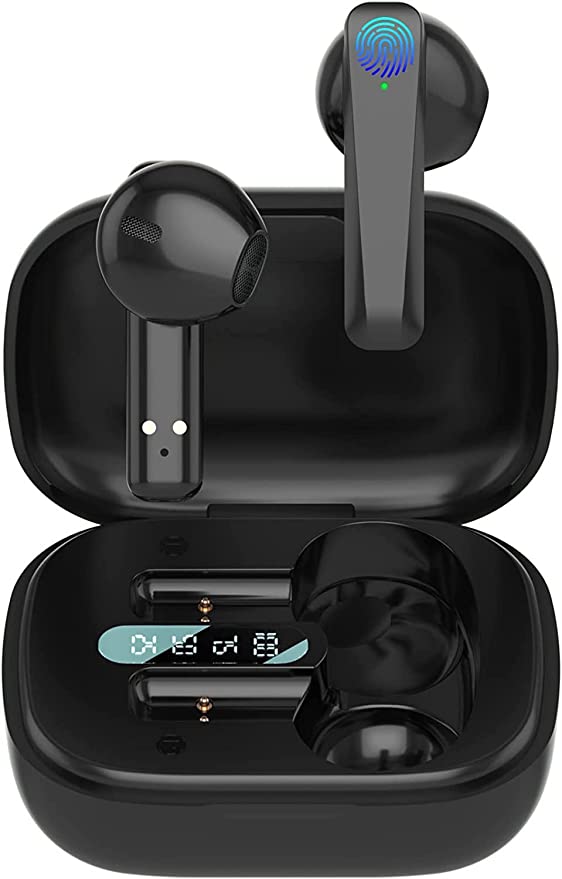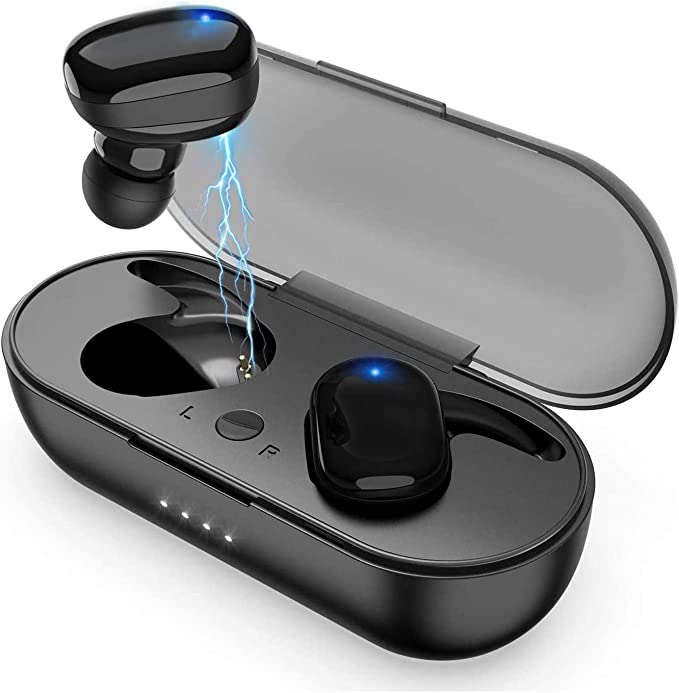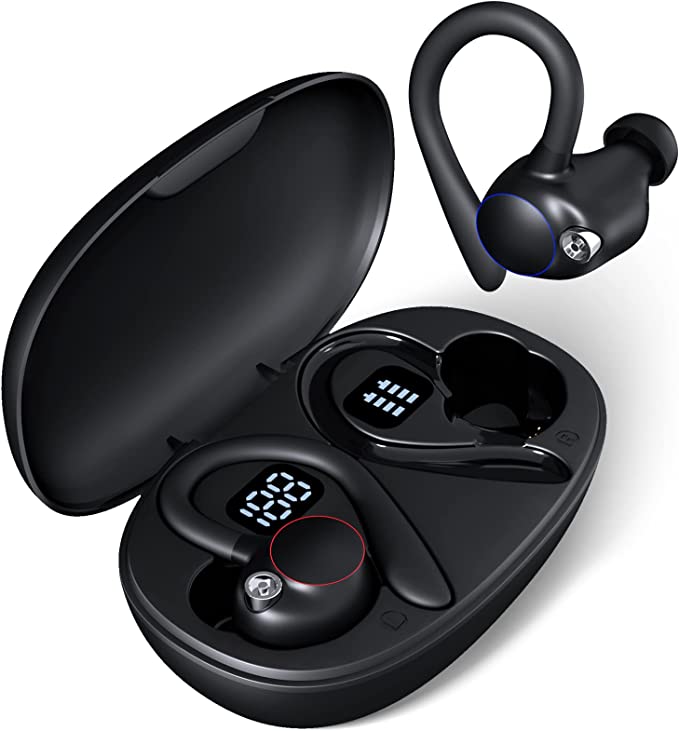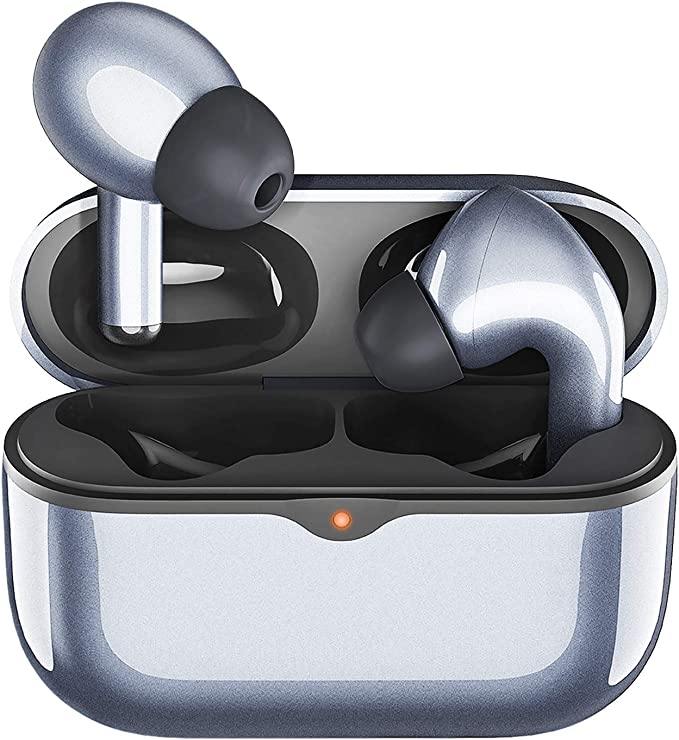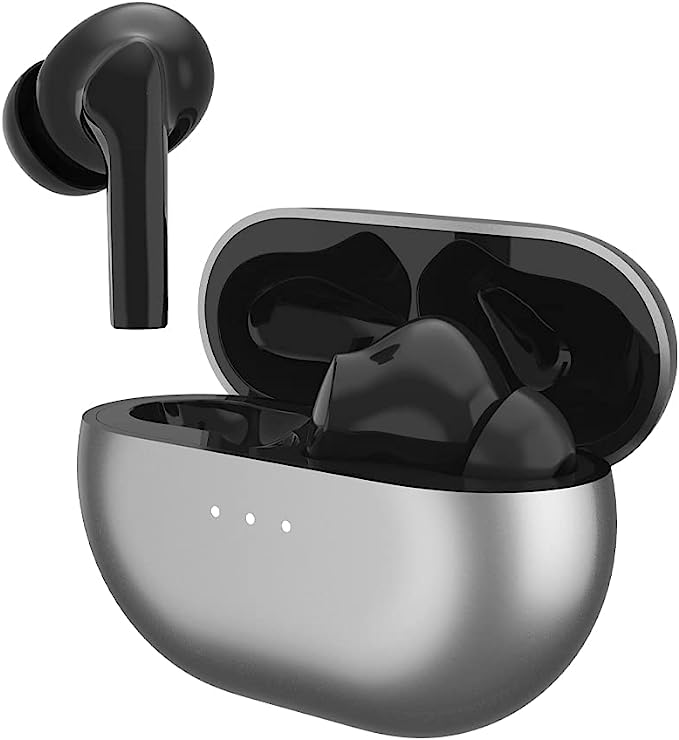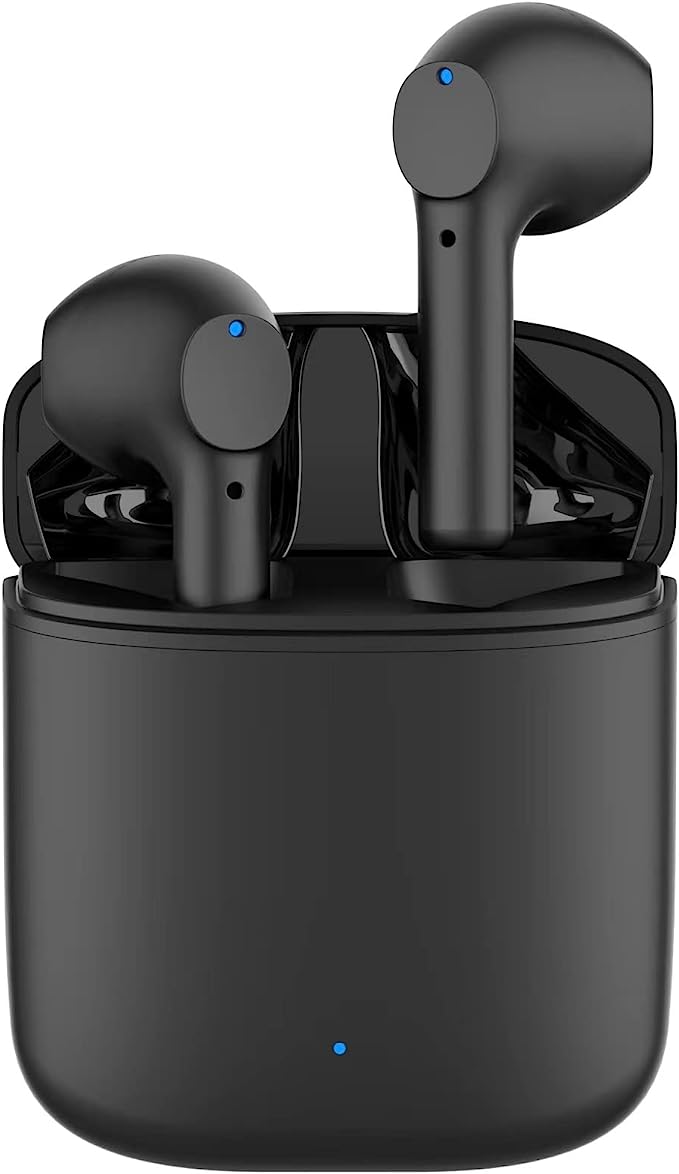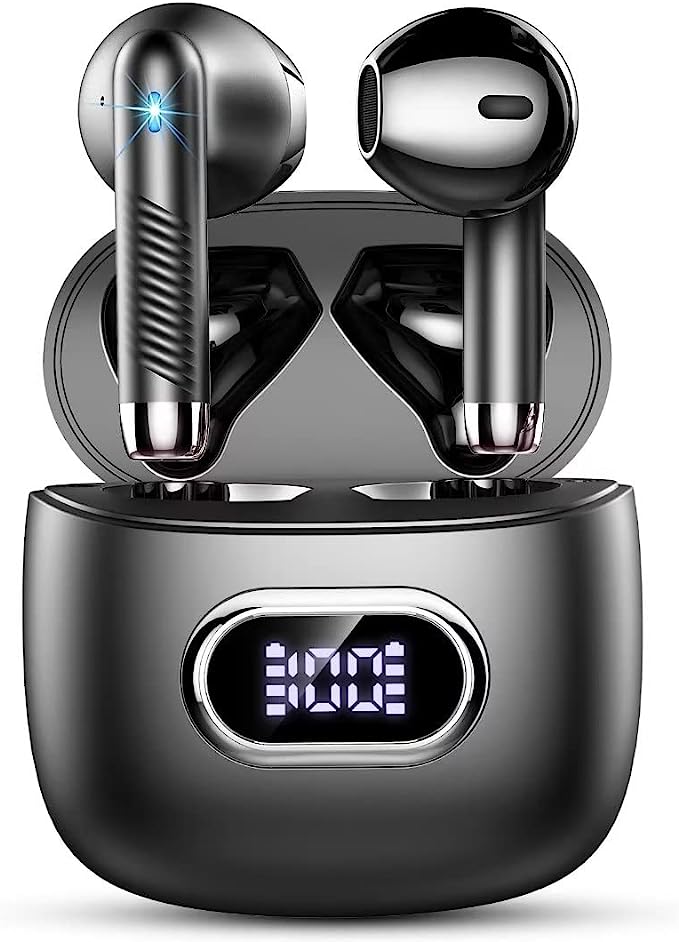i12 TWS Earbuds: The Hidden Science of Budget Bluetooth Audio
Update on Oct. 29, 2025, 5:29 p.m.
The ‘Good Enough’ Revolution: Decoding the Science in Budget Earbuds
In the vast sea of personal technology, a curious phenomenon has emerged: the rise of the shockingly affordable, yet surprisingly functional, gadget. Nowhere is this more apparent than in the world of true wireless earbuds. We see them everywhere, promising cable-free convenience and all-day audio for the price of a few cups of coffee. It’s easy to be skeptical. How can something so complex be so inexpensive?
This isn’t a review or a buyer’s guide. Instead, think of it as a friendly expedition into the heart of modern manufacturing and applied science. We’re going to use a common and representative example—the ubiquitous Twshouse I12 TWS Earbuds—as our specimen. Our goal is to look past the price tag and uncover the fascinating story of engineering choices, clever compromises, and the incredible democratization of technology that allows such a product to exist.
Let’s pull back the curtain and explore the art of the “good enough” revolution.

The Invisible Handshake: Why Bluetooth 5.1 is the Unsung Hero
Remember the early days of Bluetooth audio? It was often a frustrating experience filled with choppy connections, noticeable lag, and batteries that seemed to drain if you just looked at them. Technology has come a long way since then.
Many budget earbuds, including our i12 TWS specimen, often list “Bluetooth 5.1” as a key feature. While newer versions like 5.3 or 5.4 exist, the choice of 5.1 is a brilliant piece of engineering strategy. Here’s why it’s the perfect fit for this category:
- Maturity and Stability: Bluetooth 5.1 is a well-established, reliable standard. The bugs have been ironed out, and the technology is incredibly stable. For manufacturers, this means less time and money spent on troubleshooting, leading to lower production costs.
- Cost-Effectiveness: Chipsets running mature standards like Bluetooth 5.1 are manufactured in colossal volumes. This economy of scale drives the price of the individual chip down to mere cents, making it an obvious choice for a budget-friendly device.
- The ‘Good Enough’ Performance: For streaming music from your phone in your pocket, Bluetooth 5.1 provides more than enough bandwidth, range, and power efficiency. It offers a stable connection and contributes to decent battery life without the added cost of the marginal improvements found in the very latest standards.
That “one-step pairing” feature mentioned in the i12’s description is a direct benefit of these modern, mature chips. The initial digital handshake, where your phone and earbuds exchange security keys, is now a seamless process. On subsequent uses, they recognize each other instantly. This isn’t magic; it’s the result of refined protocols on an affordable, mass-produced chip—a perfect example of a high-end convenience becoming a universal standard.
The Heart of the Sound: Drivers, DSPs, and the Illusion of Bass
At the core of every earbud is a driver, the tiny engine that turns electricity into sound. Most earbuds use a dynamic driver, which works like a miniature loudspeaker. An electrical signal makes a coil vibrate within a magnetic field, which in turn moves a thin membrane (the diaphragm) to create sound waves.
The material of this diaphragm is crucial. The Twshouse I12, for example, claims to use “graphene-coated drivers.” Graphene is a Nobel Prize-winning wonder material—a single layer of carbon atoms that is incredibly light, strong, and stiff. In theory, a diaphragm made of graphene is an audiophile’s dream. Its stiffness allows it to produce powerful, distortion-free bass, while its lightness enables it to reproduce crisp, detailed high notes.
But here lies the first major “artful compromise.” A pure graphene driver is expensive and difficult to produce. In budget audio, “graphene-coated” usually means a conventional plastic diaphragm has been sprayed with a thin layer of graphene-based material. While this can add some stiffness and improve performance over the most basic materials, the real magic isn’t in the coating.
The true secret weapon of budget audio is the Digital Signal Processor (DSP).
Think of the DSP as a tiny, invisible sound engineer living inside the earbuds. It’s a microchip that can manipulate the audio signal in real-time before it ever reaches the drivers. The i12’s description mentions a “DSP-equipped audio processor” that “provides bass sound.” This is key. The DSP can use clever psychoacoustic algorithms to boost certain frequencies and create the perception of deep, resonant bass, even if the small physical drivers can’t naturally produce it. It’s an electronic solution to a physical limitation, allowing manufacturers to achieve a satisfying, consumer-friendly sound from inexpensive components.

The Unseen Fuel: Mastering Power with Lithium-Ion
Every piece of portable tech we own, from flagship phones to budget earbuds, runs on Lithium-ion (Li-ion) batteries. They are celebrated for their ability to pack a lot of energy into a tiny, lightweight package.
The Twshouse I12 claims up to 5 hours of playtime on a single charge, with the case providing another 25 hours for a total of 30. This system is another brilliant compromise. The earbuds themselves contain very small batteries to keep them light and comfortable. The charging case acts as a portable power bank, or a “mothership,” allowing you to refuel them on the go.
This design solves a major user pain point—battery anxiety—without needing to engineer a single, large, and heavy battery into the earbuds themselves. The 5-hour runtime is the “good enough” metric for a workout, a commute, or a couple of hours of focused work. For anything longer, you have the case. It’s an elegant solution that balances physical design constraints with practical, all-day usability.
The Physical Experience: Ergonomics, Durability, and Controls
An earbud can have the best technology in the world, but it’s useless if it’s uncomfortable or falls out. This is where ergonomics and build quality come in.
- Ergonomics and Isolation: The “In Ear” design of a product like the i12 is chosen for two reasons. First, a shape that fits snugly in the ear’s contours provides comfort. Second, and just as important, it creates a physical seal. This seal is responsible for passive noise isolation—literally blocking outside sound from reaching your eardrum. It’s a low-tech, cost-free way to improve your listening experience, allowing you to hear your music more clearly without turning the volume to dangerous levels.
- Durability Claims: The i12 is listed as “Waterproof for Sport.” This term, without a specific IP (Ingress Protection) rating, generally implies resistance to sweat and light splashes (likely an IPX4 equivalent). This is another “good enough” measure. It provides the necessary protection for its most common use case—the gym—without the expense of making it fully submersible, a feature most users will never need.
- The Trade-off of Touch: Touch controls are a premium feature that has trickled down to even the most affordable earbuds. However, their implementation is often a source of compromise. As some user reviews for the i12 note, the controls can be overly sensitive. This is because budget designs may use simpler sensors without the sophisticated software algorithms that higher-end models use to distinguish between an intentional tap and an accidental brush. It’s a classic trade-off: you get the feature, but with a slight compromise in user experience.

Conclusion: The Informed Listener
When we look inside a budget earbud like the Twshouse i12 TWS, we don’t find cheap junk. We find a masterpiece of cost-effective engineering. It’s a product built on the principle of intelligent compromise: using a mature and affordable Bluetooth chip, pairing modest drivers with a clever DSP, and designing a physical shell that delivers the core essentials of comfort and passive isolation.
Understanding this doesn’t diminish the product; it elevates our appreciation for it. It empowers us as consumers. When you see a feature list now, you can see beyond the marketing buzzwords. You understand that “graphene-coated” is about enhancing a driver, but the real sound shaping comes from the DSP. You know that “30-hour playtime” is a story about the synergy between the earbuds and their case.
The goal isn’t to declare these earbuds “good” or “bad.” The goal is to recognize them for what they are: a triumph of accessible technology. They represent a world where the barriers to entry have been lowered, allowing more people than ever to enjoy the simple freedom of wireless audio. And that is a truly remarkable scientific achievement.


